Photographs: Courtesy, Bandhan Namrata Acharya
In 2001, when Kolkata-based microfinance institution Bandhan advertised for ground-level credit officers for its new branch, it received 12 applications.
Of the 12 applicants, six turned up for the interview.
Four of the six were offered a job, but only two accepted it.
On the date of joining, only one of the new recruits showed up and he too resigned within days.
Today, as Bandhan recruits staff for the bank it proposes to set up after it was granted a banking licence by the Reserve Bank of India, graduates from some of India's most sought-after institutes like the Indian Institute of Technology and Indian Institute of Management want to be part of it. For 15 posts, the proposed bank has received close to 27,000 applications.
...
Bandhan, India's newest bank, takes shape
Image: Bandhan team.Photographs: Courtesy, Bandhan
"Most applicants said that as an employer, Bandhan would provide them the opportunity to be part of a team setting up a bank with a new business model," says a human resource official at Bandhan.
This might be a job-seeker's perfunctory reply to a commonly asked question in an interview, yet it hints at why Bandhan could be a game-changer in the world of banking.
As a microfinance company, Bandhan's strength emanates from its strong rural reach. It covers nearly 5.6 million borrowers, served by 13,000 employees who are willing to work and stay in villages.
In addition, it has a strong financial backing with a net worth of about Rs 1,100 crore (Rs 11 billion) - much above the regulatory requirement of Rs 500 crore (Rs 5 billion).
...
Bandhan, India's newest bank, takes shape
Image: Beth A Payne, US Consul General being felicitated by C S Ghosh, CMD at the head office of Bandhan.Photographs: Courtesy, Bandhan
The challenges, however, far outnumber the strengths. At present, Bandhan's core team consists of 25 people in charge of seven key departments - risk management, operations, business development, planning, IT, internal audit and human resources.
However, Bandhan has no treasury management department. Even if each of its borrower deposits Rs 100-500 in the bank, Bandhan's 5.6 million borrowers translate into an instant deposit base of Rs 56 crore (Rs 560 million) to Rs 280 crore (Rs 2.80 billion).
Thus, an effective strategy to deploy the funds would be a crucial test for Bandhan as a bank.
A tough transition
"For any Micro-finance Institution (MFI) converting into a bank, the biggest challenge is to collect deposits."
"The responsibility of the money of millions of depositors is a fiduciary obligation and requires a lot of discipline," says Samit Ghosh, a banker-turned-microfinancier and founder of Ujjivan
...
Bandhan, India's newest bank, takes shape
Image: Bandhan employees talk to rural people.Photographs: Courtesy, Bandhan
With a repayment rate of 99.5 per cent, the present risk management team at Bandhan did not have a difficult task at hand.
The existing risk management system comprises weekly audits of all the branches, apart from annual audits.
However, as a bank, Bandhan will face new challenges arising out of the huge dependence on the unsecured loan portfolio of MFIs.
In addition to this, Bandhan is expected to venture into untapped territories like lending to micro, small and medium enterprises (MSME) with loan amounts varying from Rs 50,000 to Rs 20,00,000.
However, an urban unsecured MSME loan comes with much higher risks as compared to micro loans .
Bandhan's strategy will be to replicate the MFI model through a strong personal interface with borrowers.
"Our risk management system has shown that even the unsecured portfolio has little risk. Our repayment rate is 99.5 per cent. The same follows for the MSME segment. Further, as a bank, the risk will be mitigated," says Bandhan CEO Chandra Shekhar Ghosh.
At the same time, Bandhan is expected to rely on government-backed Credit Guarantee Fund Trust for Micro and Small Enterprises to cover the risk in the unsecured lending portfolio in this segment.
The trust covers lender's default risk by 75 to 85 per cent of the credit facility.
...
Bandhan, India's newest bank, takes shape
Image: Bandhan plans to continue its microfinance operations, but as a bank.Photographs: Reuters
Unlike most private sector banks, Bandhan would initially avoid aggressive marketing of its banking products. Rather, the bank would go for "strategic expansion," says Ghosh.
The next big challenge before Bandhan is to overhaul the IT set-up. "Although all our branches are computerised and linked to a central server, as a bank, the system will be completely overhauled.
We will need a core banking system in place," Ghosh says.
At present, Bandhan's lending model is too simplistic to be replicated in a bank. Loans are disbursed in cash through instant approvals at group meetings.
Thus, a substantial amount of cash is physically carried by Bandhan's staff to rural households, literally epitomising doorstep banking.
Bandhan will need to invest in technology, like hand-held devices to make doorstep banking foolproof.
Not giving up on villages
Bandhan plans to continue its microfinance operations, but as a bank.
"Mircofinance and our reach in rural areas are our biggest strengths," says Ghosh.
Nearly 70 per cent of Bandhan's operations will be concentrated in rural areas.
Thus, when Ghosh says Bandhan will open nearly 600 branches at one go, it seems a plausible target; it already has 2016 branches, mostly in villages. Most of these branches are concrete structures furnished with a few chairs, a table and a bed for the staff.
...
Bandhan, India's newest bank, takes shape
Image: Bandhan is among the first generation micro-finance institution and follows the Grameen model of banking.Photographs: Reuters
With microfinance continuing to be Bandhan's spine, the next big question that needs to be resolved is of the choice of its banking model.
Bandhan is among the first generation MFIs and follows the Grameen model of banking.
Under this model, credit decisions are taken at the branch level, which facilitates quick disbursal of loan in about a day's time.
New generation MFIs like Ujjivan and Janalakshmi, on the other hand, follow the retail banking model, where credit is disbursed after credit appraisal at a centralised unit.
In these MFIs, the credit disbursal usually takes about five days.
"All the loans at a microfinance unit being unsecured, it would be pointless to verify the income statement of the borrowers," says Ghosh.
"There is no income statement to support the borrower's creditworthiness. So we will stick to our branch level verification process."
...
Bandhan, India's newest bank, takes shape
Image: Though Bandhan is today flooded with resumes, retaining talent at the top level could be a concern.Photographs: Reuters
As a bank, Bandhan would, therefore, stick to its Grameen model, creating a unique hybrid model of banking.
Though Bandhan is today flooded with resumes, retaining talent at the top level could be a concern.
So far, for Ghosh, the workforce selection has been more on the basis of utility than degrees.
Thus, nearly 60 per cent its 13,000-odd field employees are Class XII pass-outs, while the rest are just graduates.
There is also no provision of performance-linked financial incentive to the staff at any level.
"Without a deep emotional connect, it would have been impossible to maintain a repayment rate of 99 per cent. Team spirit is one of the major reasons for our success," says Ghosh.
The bigger concern, says a Bandhan official, is how the new staff will blend in the existing culture.
....
Bandhan, India's newest bank, takes shape
Image: The sprawling office of Bandhan at Rajarhat.Photographs: Indrani Roy/Rediff.com
The team that is shaping the transition to a bank comprises seasoned banking professionals who are full-time, independent and nominee directors on its board, says Ghosh.
Bandhan's board includes Y C Nanda, former chairman, National Bank for Agriculture and Rural Development, former deputy managing director, Axis Bank, V P Singh, former executive director at IDBI and chairman of Tourism Finance Corporation of India, and R K Ghose, a lawyer, among others. There are also three nominee directors from Sidbi, IFC and IBDI.
Bandhan's present microfinance model is the result of a trial-and error method perfected over the last 15 years, says Ghosh.
However, in its trial run as a bank, it will have little scope for errors with expectations from India's newest bank being sky high.

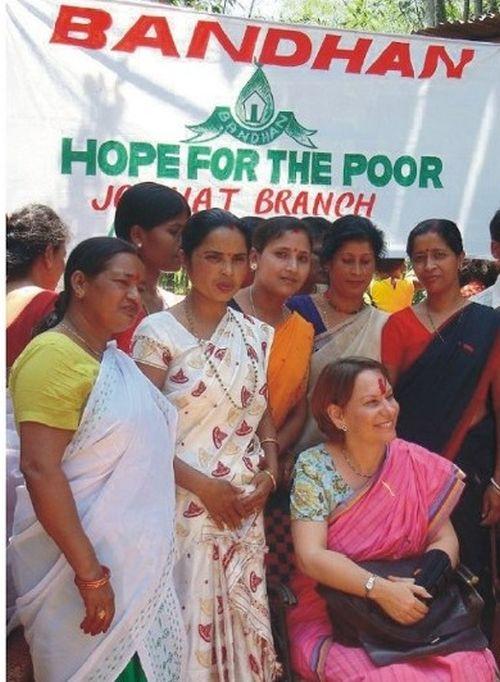
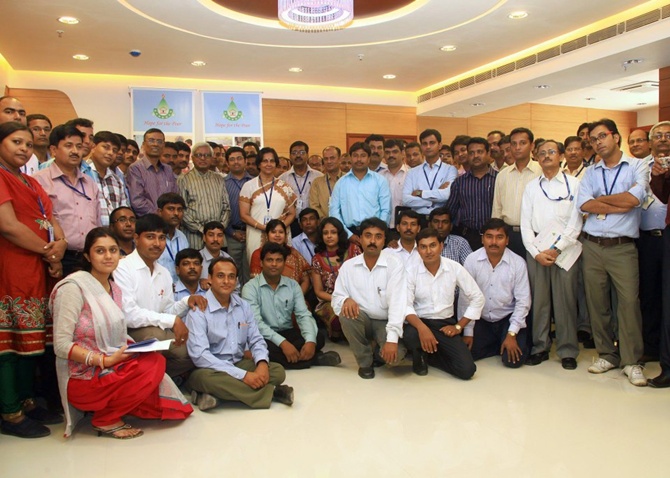
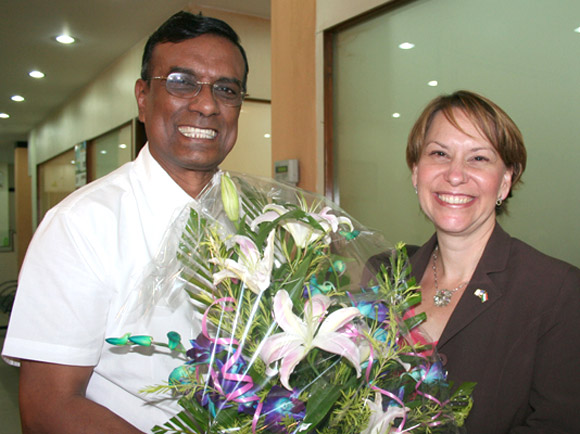
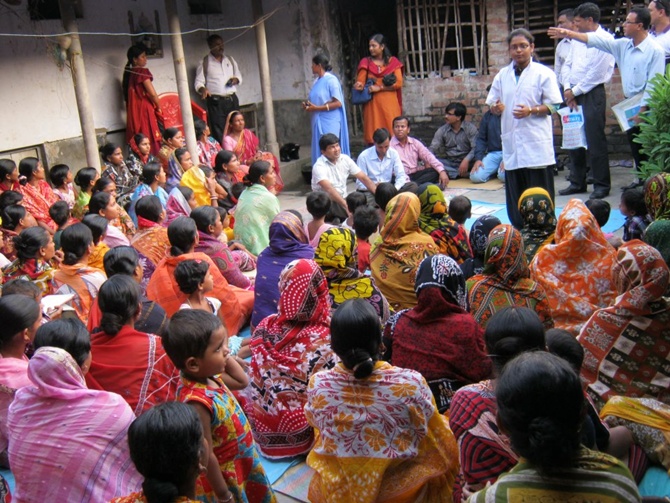
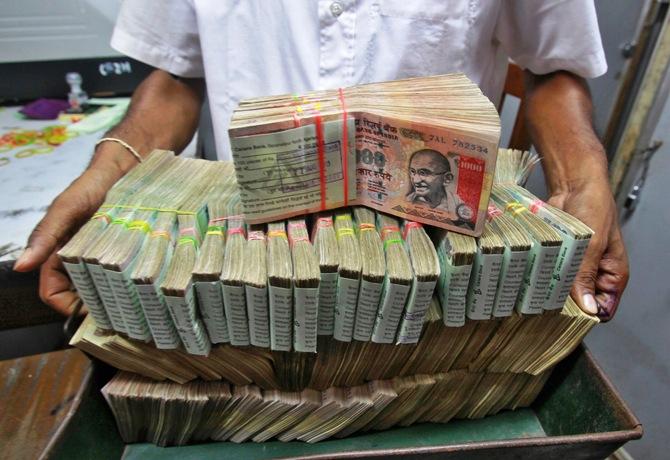
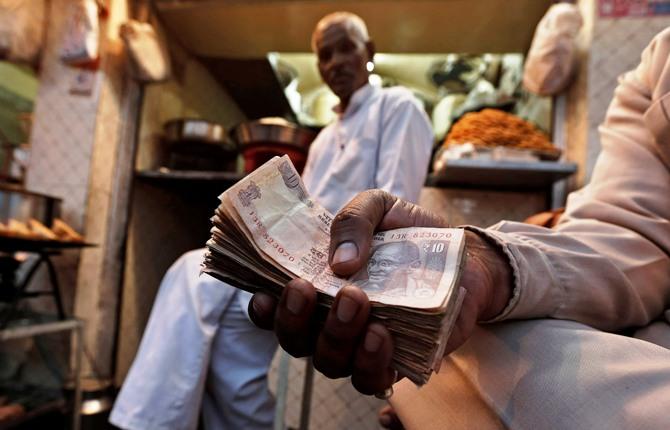


article